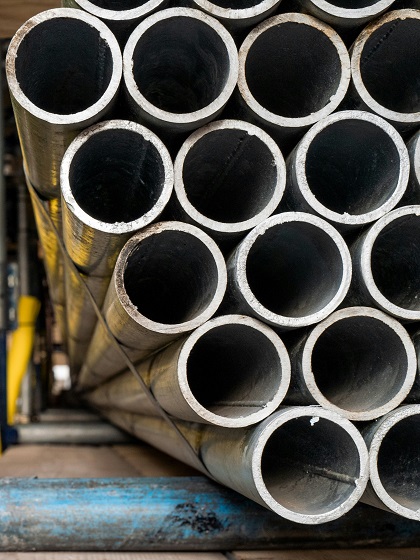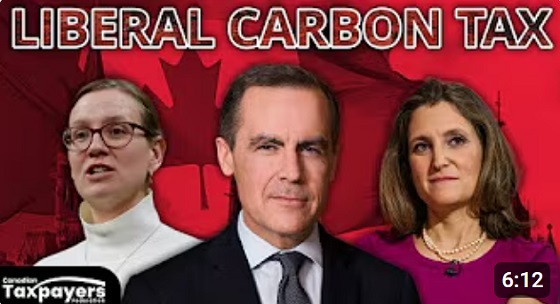Business
Trump imposes 25 percent tariff on all foreign steel, aluminum imports

Quick Hit:
President Donald Trump announced Sunday that he will impose a 25% tariff on all foreign steel and aluminum imports starting Monday. Speaking from Air Force One, Trump said the tariffs will apply to all countries, including key U.S. allies like Canada and Mexico. He also plans to unveil reciprocal tariffs on trading partners within days.
Key Details:
- Trump’s tariffs target steel and aluminum imports from all nations, including top suppliers Canada, Brazil, Mexico, South Korea, and Vietnam. Canada is also the leading source of U.S. aluminum imports.
- This move is part of Trump’s broader trade agenda, which has included tariffs on China and previous levies on Canada and Mexico. His first-term steel and aluminum tariffs sparked tensions with allies but led to renegotiated trade agreements.
- Trump’s proposal for reciprocal tariffs could trigger global trade disputes. He plans to announce these new measures midweek, stating, “If they charge us, we charge them.” Critics warn such tariffs could violate World Trade Organization rules.
Diving Deeper:
President Donald Trump announced a sweeping 25% tariff on all imported steel and aluminum, reigniting trade battles that defined his first term. Speaking aboard Air Force One while traveling to the Super Bowl, Trump confirmed that the tariffs would take effect Monday and apply to “everybody,” including major U.S. trading partners.
“Any steel coming into the United States is going to have a 25 percent tariff,” Trump said. “Aluminum, too.”
The decision marks a sharp escalation in Trump’s ongoing trade strategy, which has already led to tariffs on China and threats against European nations, Taiwan, and other key trading partners. Trump’s push for reciprocal tariffs—set to be detailed later this week—aims to raise U.S. import duties to match those imposed by foreign nations on American goods.
The impact of Trump’s steel and aluminum tariffs will be particularly significant for Canada, the largest supplier of both metals to the U.S. Other top steel providers include Brazil, Mexico, South Korea, and Vietnam. Aluminum imports primarily come from Canada, followed by the United Arab Emirates, Russia, and China.
Trump’s decision mirrors actions taken during his first term when he imposed broad steel and aluminum tariffs, triggering backlash from allies. He later eased restrictions on Canada and Mexico after renegotiating trade agreements. The Biden administration subsequently reached separate agreements with the European Union, the United Kingdom, and Japan, allowing some of those trade barriers to be reduced.
It remains unclear whether Trump’s new tariffs will be in addition to those still in place or replace existing measures. Either way, the move is likely to spark further retaliation from foreign governments.
Trump’s aggressive stance on trade has already disrupted global markets in recent days with frequent tariff threats. His proposed reciprocal tariffs, set to be announced Tuesday or Wednesday, are expected to take effect “almost immediately” and could violate World Trade Organization commitments.
“Very simply, if they charge us, we charge them,” Trump said.
As Trump moves forward with his latest round of trade measures, the global economic response remains uncertain. What is clear, however, is that his trade agenda remains a central pillar of his economic policy, setting the stage for renewed tensions with key allies and trading partners.
2025 Federal Election
MEI-Ipsos poll: 56 per cent of Canadians support increasing access to non-governmental healthcare providers

-
Most believe private providers can deliver services faster than government-run hospitals
-
77 per cent of Canadians say their provincial healthcare system is too bureaucratic
Canadians are increasingly in favour of breaking the government monopoly over health care by opening the door to independent providers and cross-border treatments, an MEI-Ipsos poll has revealed.
“Canadians from coast to coast are signalling they want to see more involvement from independent health providers in our health system,” explains Emmanuelle B. Faubert, economist at the MEI. “They understand that universal access doesn’t mean government-run, and that consistent failures to deliver timely care in government hospitals are a feature of the current system.”
Support for independent health care is on the rise, with 56 per cent of respondents in favour of allowing patients to access services provided by independent health entrepreneurs. Only 25 per cent oppose this.
In Quebec, support is especially strong, with 68 per cent endorsing this change.
Favourable views of accessing care through a mixed system are widespread, with three quarters of respondents stating that private entrepreneurs can deliver healthcare services faster than hospitals managed by the government. This is up four percentage points from last year.
Countries like Sweden and France combine universal coverage with independent providers and deliver faster, more accessible care. When informed about how these health systems run, nearly two in three Canadians favour adopting such models.
The poll also finds that 73 per cent of Canadians support allowing patients to receive treatment abroad with provincial coverage, which could help reduce long wait times at home.
Common in the European Union, this “cross-border directive” enabled 450,000 patients to access elective surgeries in 2022, with costs reimbursed as if they had been treated in their home country.
There’s a growing consensus that provincial healthcare systems are overly bureaucratic, with the strongest agreement in Alberta, B.C., and Quebec. The proportion of Canadians holding this view has risen by 16 percentage points since 2020.
Nor do Canadians see more spending as being a solution: over half say the current pace of healthcare spending in their province is unsustainable.
“Governments shouldn’t keep doubling down on what isn’t working. Instead, they should look at what works abroad,” says Ms. Faubert. “Canadians have made it clear they want to shift gears; now it’s up to policymakers to show they’re listening.”
A sample of 1,164 Canadians aged 18 and older was polled between March 24th and March 28th, 2025. The margin of error is ±3.3 percentage points, 19 times out of 20.
The results of the MEI-Ipsos poll are available here.
* * *
The MEI is an independent public policy think tank with offices in Montreal, Ottawa, and Calgary. Through its publications, media appearances, and advisory services to policymakers, the MEI stimulates public policy debate and reforms based on sound economics and entrepreneurship.
2025 Federal Election
POLL: Canadians say industrial carbon tax makes life more expensive

The Canadian Taxpayers Federation released Leger polling showing 70 per cent of Canadians believe businesses pass on most or some of the cost of the industrial carbon tax to consumers. Meanwhile, just nine per cent believe businesses pay most of the cost.
“The poll shows Canadians understand that a carbon tax on business is a carbon tax on Canadians that makes life more expensive,” said Franco Terrazzano, CTF Federal Director. “Only nine per cent of Canadians believe Liberal Leader Mark Carney’s claim that businesses will pay most of the cost of his carbon tax.
“Canadians have a simple question for Carney: How much will your carbon tax cost?”
The federal government currently imposes an industrial carbon tax on oil and gas, steel and fertilizer businesses, among others.
Carney said he would “improve and tighten” the industrial carbon tax and extend the “framework to 2035.” Carney also said that by “changing the carbon tax … We are making the large companies pay for everybody.”
The Leger poll asked Canadians who they think ultimately pays the industrial carbon tax. Results of the poll show:
- 44 per cent say most of the cost is passed on to consumers
- 26 per cent say some of the cost is passed on to consumers
- 9 per cent say businesses pay most of the cost
- 21 per cent don’t know
Among those decided on the issue, 89 per cent of Canadians say businesses pass on most or some of the cost to consumers.
“Carbon taxes on refineries make gas more expensive, carbon taxes on utilities make home heating more expensive and carbon taxes on fertilizer plants increase costs for farmers and that makes groceries more expensive,” Terrazzano said. “A carbon tax on business will push our entrepreneurs to cut production in Canada and increase production south of the border and that means higher prices and fewer jobs for Canadians.”
-

 2025 Federal Election2 days ago
2025 Federal Election2 days agoNo Matter The Winner – My Canada Is Gone
-

 2025 Federal Election2 days ago
2025 Federal Election2 days agoASK YOURSELF! – Can Canada Endure, or Afford the Economic Stagnation of Carney’s Costly Climate Vision?
-

 Alberta2 days ago
Alberta2 days agoMade in Alberta! Province makes it easier to support local products with Buy Local program
-

 Alberta2 days ago
Alberta2 days agoProvince to expand services provided by Alberta Sheriffs: New policing option for municipalities
-

 2025 Federal Election2 days ago
2025 Federal Election2 days agoCSIS Warned Beijing Would Brand Conservatives as Trumpian. Now Carney’s Campaign Is Doing It.
-

 2025 Federal Election2 days ago
2025 Federal Election2 days agoInside Buttongate: How the Liberal Swamp Tried to Smear the Conservative Movement — and Got Exposed
-

 Bruce Dowbiggin1 day ago
Bruce Dowbiggin1 day agoIs HNIC Ready For The Winnipeg Jets To Be Canada’s Heroes?
-

 Dr. Robert Malone1 day ago
Dr. Robert Malone1 day agoThe West Texas Measles Outbreak as a Societal and Political Mirror







